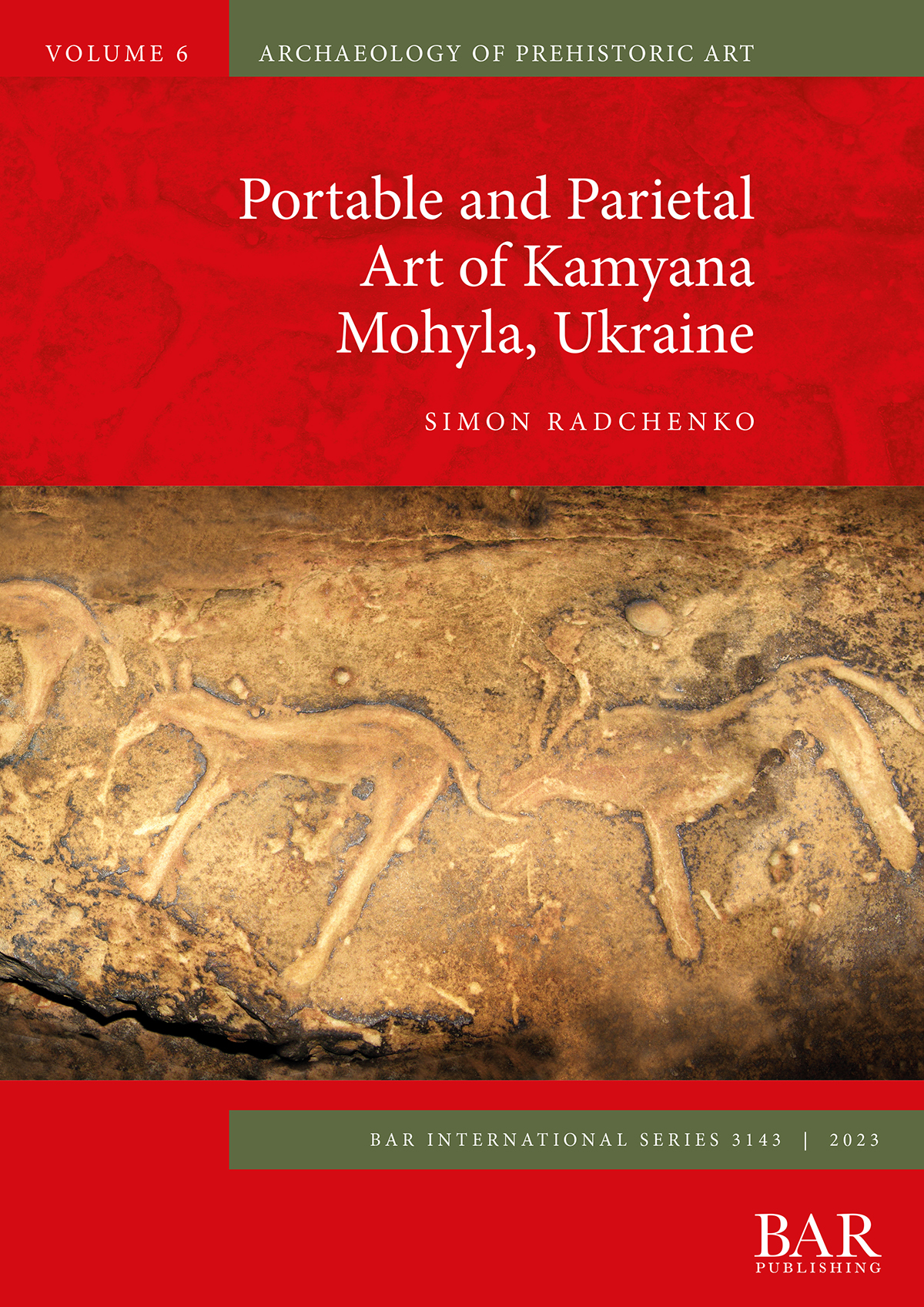


'Portable and Parietal Art of Kamyana Mohyla, Ukraine'
By Simon Radchenko
New Publication

Product details:
Author: Simon Radchenko
BAR Publishing
Publication Year: 2023
Language: English
ISBN: 9781407353852
Paperback: 228 pages, Illustrated throughout in black & white, and colour. Links to collection of fifteen 3D models.
Sub-series name: Archaeology of Prehistoric Art, 6
BAR number: S3143
Bradshaw Foundation Review:
I enjoyed reading Radchenko's new publication; it has all the science, as well as a lot of heart. His Preface announces the intention to 'make the science of rock art sound alive and dynamic', (whilst not replacing 'research with entertainment'). And he does. But the publication is engaging not only because of the author's contagious enthusiasm for the subject matter, but also because Kamyana Mohyla is in a war zone. 'Being located on the steppes of southeastern Ukraine, it has been occupied by Russian forces since late February 2022.' Well, this certainly brings new meaning to rock art in peril, and it is clear from the get-go that Radchenko is determined that its 'erasure' will be prevented from happening.
In this area of research, it is rare to find the use of the term 'Genius Loci'. In my humble opinion, the study of rock art should always involve a consideration of the prevailing character or atmosphere of the place, the 'genius of the place', the presiding deity or spirit of the place. So he is clearly a man after my own heart when he explains that 'Archaeology is a very complex and transdisciplinary practice that involves both sciences and humanities....we combine our experiences in the field with sophisticated academic practices....(and) finally, our special places are special.' A chosen place can reveal to an archaeologist a shared human experience between the past and the present. Excavating a hearth is not just a mechanical process, but also an emotional one; we imagine the thoughts of the original occupants around that hearth. And a painted mark on a fragment of rock is not simply a daub; that mark and that fragment were chosen for a reason, which still resonates.
This new publication is based on extensive research but, not surprisingly, there is much work still to be done, hence the early announcement from the author: 'I give you Kamyana Mohyla’s cultural landscape as we understand it today.' This is important and timely because Kamyana Mohyla is almost unknown abroad, but being 'located on the western border of the incredibly large Eurasian steppe belt, it fuses and mixes different ideas, artistic impressions, and archaeological data both from Europe and Asia.' Kamyana Mohyla presents a rare cultural context 'in between Europe and Asian prehistoric worlds, exhibiting features from both.'
'Portable and Parietal Art of Kamyana Mohyla' includes modern and actual mapping of the location, site descriptions, a complete history of research, and archaeological & historical contexts. These have all led to a more accurate assessment of Kamyana Mohyla - which can now be attributed to the 7th instead of the 20th millenium BC - and the complex relationship between humans, art and the cultural landscape. This publication certainly puts Kamyana Mohyla on the map, but the audience must not forget that archaeological research in the North Azov Sea region has been stopped; many sites will be destroyed, mined or looted. The timing of this publication is extraordinary; with the data acquired months before the invasion, as well as operating during COVID. Clearly, it brings cultural heritage study, preservation and protection to another level. And the future? Radchenko is optimistic, with the intention of resuming with methodological plans such as the dating of the red ochre on some of the engravings, researching the settlements and burials around Kamyana Mohyla, and investigating other rock art locations in the region. Further into the future still, the author believes Kamyana Mohyla will warrant a virtual representation to safely bring this cultural heritage to a wider audience.
Peter Robinson May 2024.
by Bradshaw Foundation
Tuesday 19 November 2024
by Bradshaw Foundation
Wednesday 22 May 2024
by Bradshaw Foundation
Friday 10 November 2023
by Bradshaw Foundation
Thursday 12 January 2023
by Bradshaw Foundation
Thursday 10 November 2022
by Bradshaw Foundation
Tuesday 06 September 2022
by Bradshaw Foundation
Wednesday 20 July 2022
by Bradshaw Foundation
Monday 20 June 2022
by Bradshaw Foundation
Thursday 03 September 2020
by Bradshaw Foundation
Wednesday 26 August 2020
by Bradshaw Foundation
Saturday 27 June 2020
by Bradshaw Foundation
Tuesday 28 April 2020
by Bradshaw Foundation
Tuesday 19 November 2024
by Bradshaw Foundation
Wednesday 22 May 2024
by Bradshaw Foundation
Friday 10 November 2023
by Bradshaw Foundation
Thursday 12 January 2023
by Bradshaw Foundation
Thursday 10 November 2022
by Bradshaw Foundation
Tuesday 06 September 2022
by Bradshaw Foundation
Wednesday 20 July 2022
by Bradshaw Foundation
Monday 20 June 2022
by Bradshaw Foundation
Thursday 03 September 2020
by Bradshaw Foundation
Wednesday 26 August 2020
by Bradshaw Foundation
Saturday 27 June 2020
by Bradshaw Foundation
Tuesday 28 April 2020
Friend of the Foundation











